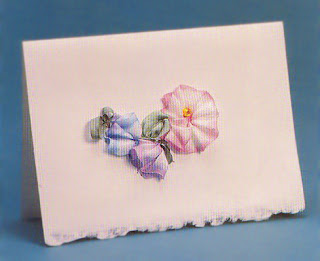MATERIALS
• 40cm (16in) square of white cotton fabric
• No 7 crewel needle
• DMC Stranded Embroidery Cotton: one skein each of topaz (725), light topaz (726), very light topaz (727), very light golden olive (834), dark forest green (987), medium forest green (988), light khaki green (3013), very light golden yellow (3078), light yellow green (3348), pine green (3364), bridal white (3865), blanc (white)
• 15cm (6in) embroidery hoop
• Water-erasable marking pen
DESIGN SIZE
20cm (8in) square
STITCHES USED
French knot, stem stitch
PREPARATION
Transfer the design from the pattern sheet onto the fabric with the water-erasable marking pen, using your favourite light source. This could be done by taping the design to a sunlit window, then taping the fabric over the top of the design, making sure that it is centred.
Outside the area of the design square, pick one side of the fabric and draw arrows towards the embroidery, all in the same direction. This will help with your shading when embroidering the design.
EMBROIDERY
All the embroidery is worked using two strands of embroidery cotton threaded in the No 7 crewel needle. Refer to the pattern sheet to establish the colour combination for the daisies. Using dark forest green (987), stem-stitch the vein in the centre of the leaves. The remaining embroidery is stitched in closely-placed French knots. Place your work in the embroidery hoop pulling it taut. Fill the centre of the leaves in dark forest green (987) and then finish stitching the outer edges of the leaves in medium forest green (988) using the pattern as a placement guide.
The yellow daisies are stitched next. Begin a petal on the same side as the arrows that you placed on the fabric.
With two strands of topaz (725) work one row of French knots. The second row of French knots is embroidered using one strand of topaz (725) and one strand of light topaz (726) threaded together in the needle. For the third row use two strands of light topaz (726). Then the next row is stitched with one strand of light topaz (726) and one strand of very light topaz (727), also threaded in the needle together. Finish the petal with two strands of very light topaz (727). Work the remaining leaves in the same manner, starting the darkest shading on the same side as the previous petal. If you find that you cannot fit all the colours into the petal, omit the mixed threads, remembering to have at least three different colours at the base of each petal to define them.
The white flowers are embroidered a little differently. Using the arrows as a guide again, start on one side of the petal using two strands of very light golden yellow (3078), stitching one row of French knots. Work the second row using two strands of bridal white (3865). Embroider the remainder of the petal in blanc (white). Finish each petal in the same manner. Using the pattern sheet as a guide, fill in the centre of the daisies beginning with very light golden olive (834) as the deepest shade, working the next section in pine green (3364) and then finishing off with light yellow green (3348). Fill in the background area with light khaki green (3013), still using French knots.
FINISHING
Your embroidered piece is now ready to be framed or it can also be made into a cushion.





















